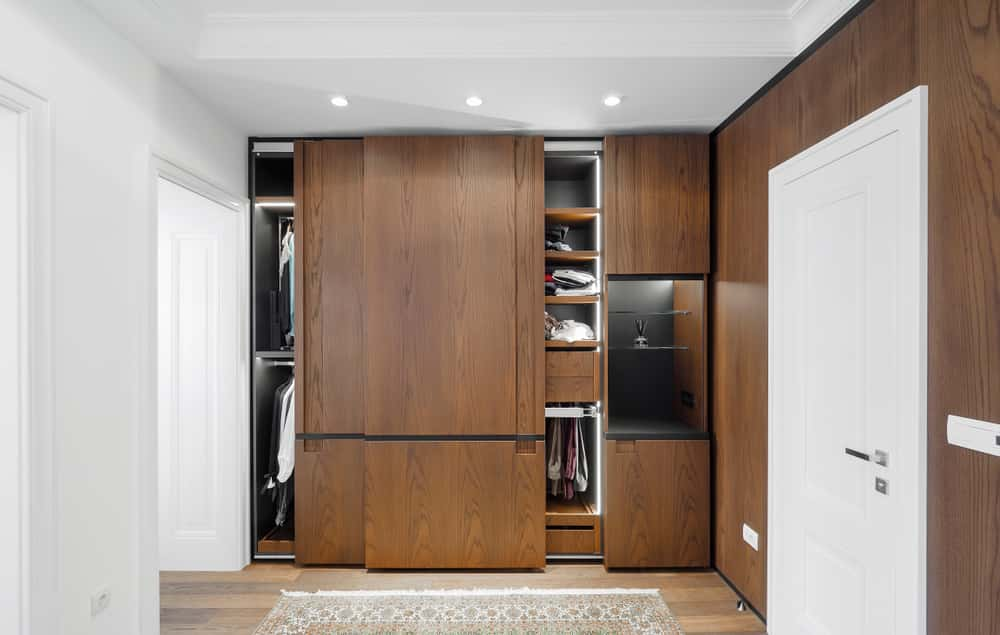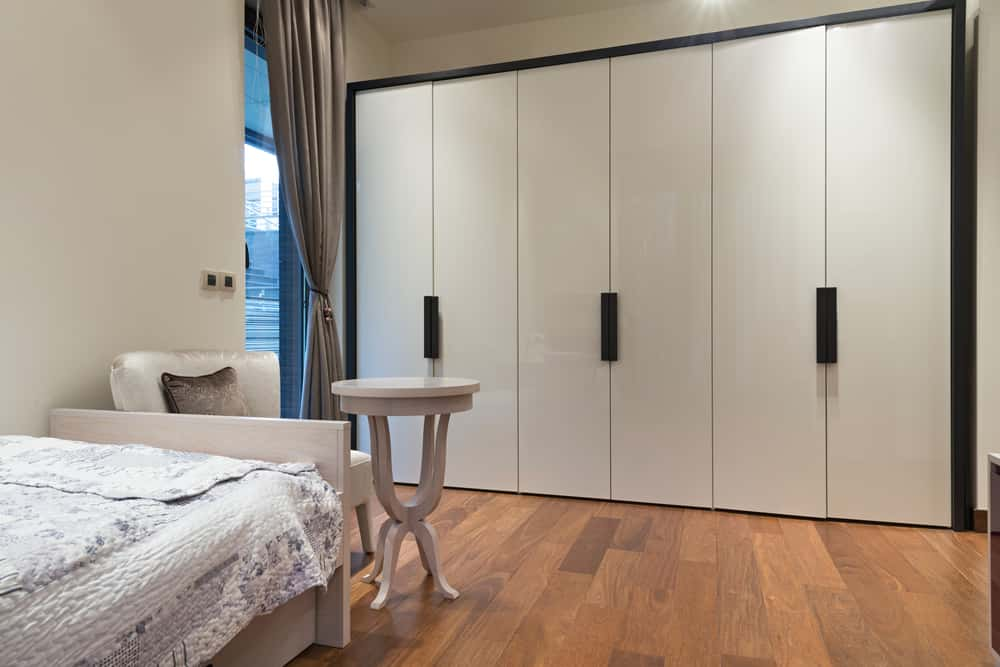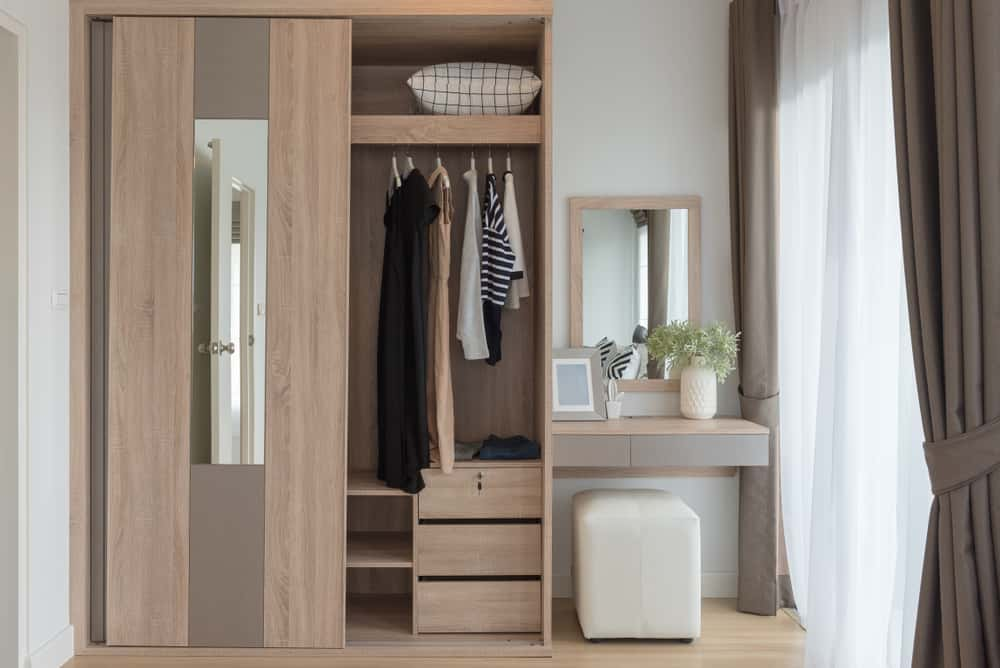When you’re designing your fitted wardrobe, you should make the right design decisions as you will be forced to live with the choices you make! Take your time to choose and weigh all the design elements carefully. The colour and style you pick will affect the aesthetics, and the materials and hardware you choose will impact the functionality and durability.
You might be wondering whether you should opt for sliding shutters or hinged shutters that will swing open. We’re here to tell you the pros and cons of sliding or hinged. Make your choice based on your usage patterns, the space available, your convenience and the décor theme that you are following for your bedroom.

Hinged Shutters Wardrobe
Most traditional wardrobes have hinged shutters, and this is the most conventional, cost-effective choice. Hinged shutters can be adapted to classical as well as contemporary design themes. They also suit L-shaped corners and can be fitted along walls that are angled.
Hinged doors offer better visibility of the contents as all the doors can be kept open at the same time. This is not possible in a wardrobe with sliding shutters, as the shutter will always slide against one-half of the wardrobe which will be concealed.
If your bedroom is on the smaller side, you have to plan the space to allow the doors to swing out in such a way that free movement is not obstructed. This means that ideally, if each shutter is 2 feet wide, you should have at least 4 ½ to 5 feet space in front of the wardrobe to allow ease of usage.

Sliding Shutters Wardrobe
Sliding shutters slide horizontally on a track that is fitted either to the top and bottom of the wardrobe or are hung from just the top alone. Depending on the width of the room, you can have two or three doors for the length of your wardrobe. Each shutter should ideally not be more than three or four feet wide as it becomes very heavy and hence difficult to handle.
Sliding shutters do not obstruct the circulation space in the room, and as the doors do not swing out you require just 3 feet of free space in front of the shutter. This helps to streamline the space if your room is on the smaller side.
These shutters usually impart a sleek and contemporary look to your room and go very well with modern and minimalistic décor themes.
Sliding Vs Hinged Shutter Wardrobe
| Properties | Sliding shutters | Hinged shutters |
| Appearance | Conventional, classic | Modern, elegant |
| Utility of inside space | Only one half can be viewed/accessed at a time | All doors can be kept open so you can view and access all the contents at once |
| Clearance in front of the wardrobe | Takes up minimum clearance in front of the wardrobe as the shutters do not open out | Requires space for the shutters to open out, plus circulation space in front |
| Cost | Expensive | Cost-effective |
| Durability | Needs to be handled with care, not suitable for very rough use | Rough use possible, sturdy and dependable |
| Repair/replacement | Not easy to repair, the entire door can be replaced easily | Hinges can be easily replaced |
| Design | These wardrobes can be adapted to different styles – flat panel, raised panel, steel, or mirrored, and can even have finishes like vinyl, opaque glass, fabric and leather | Hinged doors can either be flat or raised panelled, stained or painted |
| Space for accessories | The back of the shutter cannot be used at all | The back of the shutter can be used to store accessories, by adding a rack or hooks for ties, belts, scarves and so on. |
| Durability of hardware | Over time, these doors can come off the track. They need to be checked for levelness and whether tracks are clean of dust and debris. | Hinges often wear out or rust over a period of time. They get creaky with age too. |
| Maintenance | Tracks must be kept free of dirt | Relatively maintenance-free |
Choosing your wardrobe design, and finding yourself overwhelmed by the choices available? You’re not alone. Set up a meeting with the HomeLane team, who can walk you through all your choices and the pros and cons of each!







